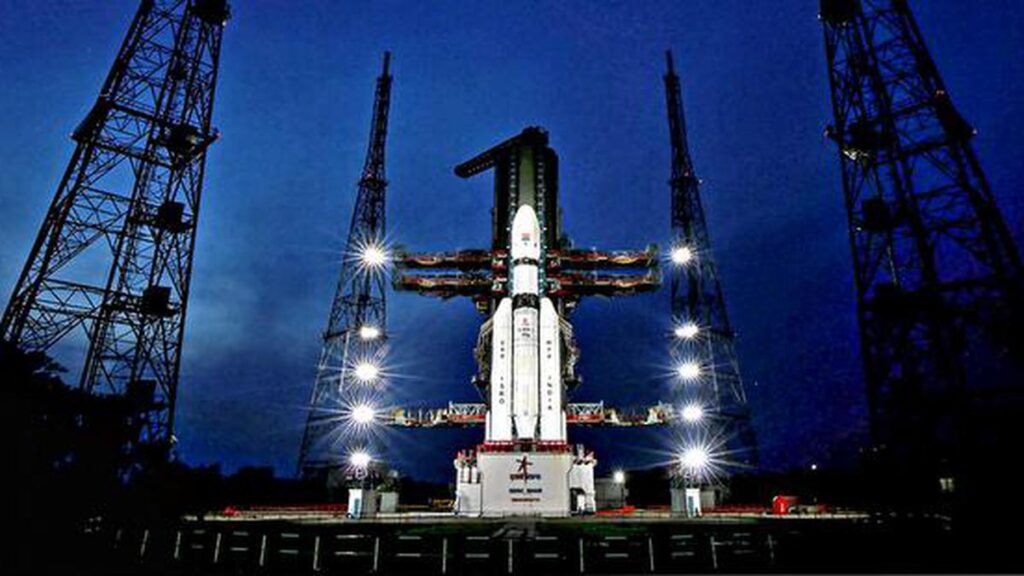Chandrayaan-3 at the launch pad at the Satish Dhawan Space Centre on July 13, 2023. | Photo Credit: PTI
India’s space agency, the Indian Space Research Organization (ISRO), has made remarkable strides in the field of space exploration with its Chandrayaan missions. Chandrayaan 1, 2, and the upcoming Chandrayaan 3 have been instrumental in unraveling the mysteries of the Moon and expanding our understanding of Earth’s celestial neighbor.
Chandrayaan 1: Laying the Foundation
Launched on October 22, 2008, Chandrayaan 1 was India’s first lunar exploration mission. Its primary objective was to map the lunar surface, study the distribution of chemical elements, and identify potential resources. Equipped with several scientific instruments, including the Moon Mineralogy Mapper (M3), Chandrayaan 1 successfully discovered water molecules on the Moon’s surface, challenging the previously held notion that the Moon was a dry celestial body. This groundbreaking finding opened new doors for future lunar explorations.
Chandrayaan 2: Aiming for the Moon’s South Pole
Building upon the success of its predecessor, Chandrayaan 2 was a more ambitious mission that sought to land a rover on the lunar surface. Launched on July 22, 2019, this mission comprised an orbiter, a lander named Vikram, and a rover called Pragyan. Although the landing of Vikram did not go as planned, the orbiter remained operational and continued to capture valuable data about the Moon. Chandrayaan 2 aimed to study the lunar topography, mineralogy, and presence of water ice in the permanently shadowed regions near the Moon’s South Pole. The mission showcased India’s technological prowess and further fueled the nation’s aspirations for space exploration.
Chandrayaan 3: Paving the Way for Future Lunar Exploration
Undeterred by the challenges faced during Chandrayaan 2, ISRO is preparing for its next lunar mission, Chandrayaan 3. The mission is expected to be a collaborative effort, with potential contributions from international partners. Chandrayaan 3 aims to improve upon its predecessor’s landing capabilities and conduct further scientific investigations on the lunar surface. It will serve as a stepping stone towards future manned missions and the establishment of a sustainable presence on the Moon.
India’s Chandrayaan missions have marked significant milestones in lunar exploration, enhancing our knowledge of the Moon and paving the way for future scientific endeavors. Chandrayaan 1’s discovery of water molecules challenged our understanding of the Moon’s composition, while Chandrayaan 2 showcased India’s technological capabilities despite the landing setback. With Chandrayaan 3 on the horizon, India continues to push the boundaries of space exploration, inspiring the world with its determination and commitment to unlocking the secrets of the Moon.


